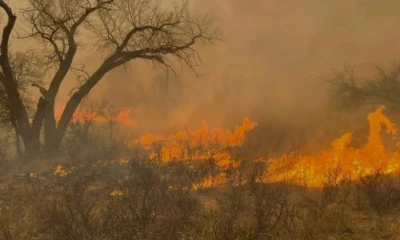A massive wildfire named the Smokehouse Creek fire has wreaked havoc across the Panhandle region of Texas and into Oklahoma, claiming the lives of two women and leaving a trail of destruction in its wake. This wildfire, the worst in Texas history, has scorched nearly 4,400 square kilometres of land, threatening numerous homes and structures with its relentless flames. Despite ongoing efforts by authorities, the full extent of the damage and casualties remains uncertain.
Among the tragic victims of the fire are Cindy Owen and Joyce Blankenship. Cindy Owen encountered the blaze while driving in Hemphill County, where she was engulfed by flames after getting out of her truck. Despite efforts to save her, Owen succumbed to her injuries in an Oklahoma burn unit. Joyce Blankenship, an 83-year-old former substitute teacher, lost her life when her charred home became her final resting place.
Texas Governor Greg Abbott has described the aftermath of the wildfire as devastating, with up to 500 structures potentially destroyed by the blaze. The scorched landscape now bears witness to the fire’s ferocity, leaving behind charred prairies, dead livestock, and ruined homes throughout the region.
Efforts to contain the fire have seen some progress, with containment levels reaching 15 per cent, up from a mere 3 per cent earlier in the week. However, the forecasted weather conditions pose a significant challenge, with high temperatures, strong winds, and low humidity expected to exacerbate the situation over the weekend.
According to the National Weather Service, the Texas and Oklahoma panhandles will experience temperatures as high as 80°F (27°C) and wind gusts of up to 50mph by Sunday. With relative humidity expected to plummet to between 5-10 per cent, the risk of further wildfires remains dangerously high across the affected areas.
The Smokehouse Creek fire is the largest among several major wildfires burning in the rural Panhandle region, extending its reach into Oklahoma. Efforts to contain the fire are focused on protecting structures and containing its northern edge, amidst the backdrop of a landscape transformed into a desolate wasteland by the relentless blaze.
While authorities have not yet determined the cause of the fires, they have been fuelled by strong winds, dry grass, and unseasonably warm weather. This catastrophic event surpasses the previous record held by the 2006 East Amarillo Complex fire, underscoring the urgent need for continued vigilance and proactive measures to mitigate the impact of wildfires in the region.

















